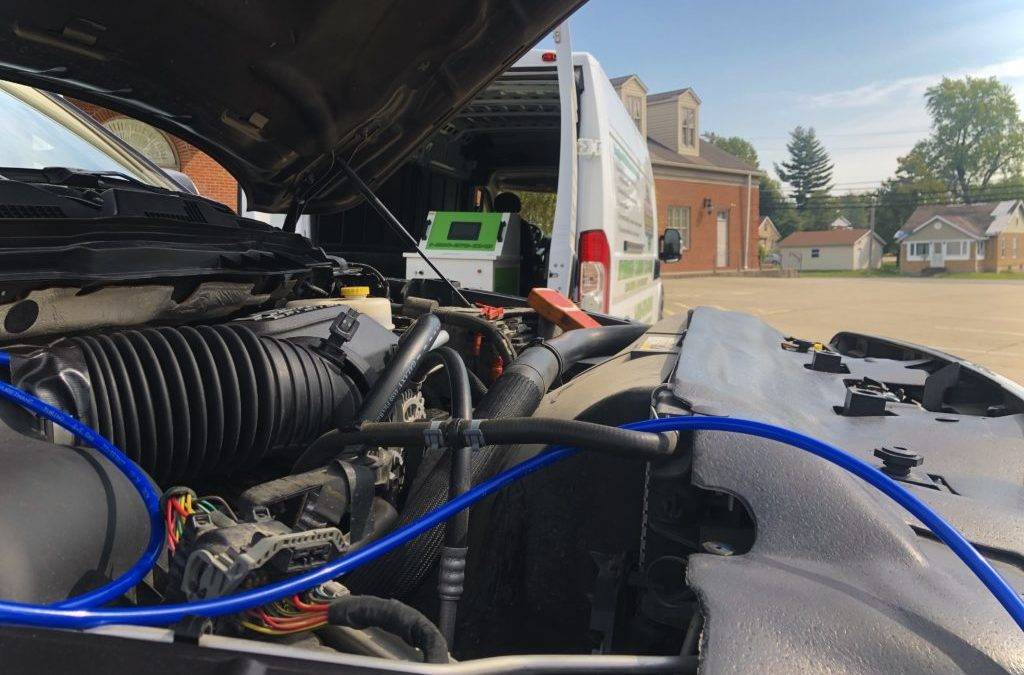Carbon cleaning is the process of cleaning the built-up carbon deposits inside a vehicle’s engine, restoring its performance. Carbon deposits form because of incomplete combustion in an engine’s combustion chamber. While carbon buildup has been a natural byproduct of internal combustion engines since their inception, modern environmental regulations have restricted exhaust allowing more and more deposits to settle on critical components. Those deposits can form on cylinders and valves, or on more expensive parts such as turbos and particulate filters, causing decreased performance and ultimately component failure. Cleaning the engine periodically as a preventative maintenance helps preserve engine performance.
Firearms maintenance serves as a reasonable comparison. Gunpowder is made of very different chemicals than fuel, but carbon is still a part of the equation. After firing a gun, there is residue left over that needs to be cleaned. Skipping cleaning can alter bullet trajectory, rusting, failure to fire, failure to feed, or ejection failure. Proper firearm maintenance would require cleaning after each event. It is a similar concept when considering the effect of preventative maintenance to a vehicle. Whenever your engine is running, there is some form of carbon residue that is left from imperfect combustion. So, this service is recommended to be completed every 20,000 miles or 6 months.

A comparison could also be made with cholesterol in the body’s blood vessels. A little cholesterol is good and important to your health. Your body needs it to build cells and make vitamins. However, if too much cholesterol accumulates on the walls of vessels, it narrows arteries and can cause heart diseases, strokes, blood clots, and ultimately heart attacks. Carbon buildup affects a vehicle similarly. If it goes untreated, it clogs downstream component parts that are then compromised and will require either repair or replacement.
Is Carbon Cleaning Worth It?
There are several ways to determine the worth of the treatment. One approach is considering the replacement costs for commonly affected parts like the turbos and DPFs. The chart below outlines average repair costs for several parts most impacted by carbon buildup. Carbon cleaning saves thousands of dollars in maintenance costs.
| Components and Repair Costs Commonly Caused by Carbon Buildup | |
| Description | Material and Labor Costs |
| Catalytic Converters | $945 – $2,475 |
| Diagnostic Charge | $65 – $100 |
| Diesel Particulate Filter (DPF) | $1,000 – $10,000 |
| Sensors | $170 – $250 |
| Turbos | $1,800 – $7,000 |
| Valve Train | $900 – $2,000 |
*Estimates provided by RepairPal.com, Carbrain.com, McNallyInstitute.com, Autozone.com
**The estimates above don’t take into account regional price differences, make, model, or taxes.
A carbon cleaning service cost varies between $175 and $450 depending upon vehicle/engine type. The average American driver travels between 15,000 and 20,000 miles per year. It is a shock to new vehicle owners when the above components can fail as early as 20,000 miles. Including this service as regular maintenance saves a significant amount in repair costs along with ensuring your vehicle avoids breakdowns, tow bills, and the inconveniences that come with them.
It is even more significant when one considers the trucking industry. The average semi truck travels 45,000-60,000 each year. Some even exceed 100,000 miles. Conducting the cleaning service every 20,000 could save significantly on repair costs of the above parts, not to mention the loss of revenue for down time.
As far as fleets, and specifically over-the-road semi truck fleets, are concerned, the largest financial benefit of carbon cleaning is improvement in fuel economy. HHO carbon cleaning has seen an average of 9% improvement in fuel efficiency for semi-trucks. That doesn’t hold for all vehicles, but for the trucking industry that is average. 10% fuel savings for a truck that travels 60,000 miles per year with diesel fuel at $5 per gallon saves $4,615 . According to the EIA, the average diesel price for the last 6 years has been $2.84. That would still have provided a significant savings of $2,620 per year per vehicle, looking back. But right now, estimates are that diesel will stay above $100 per barrel according to Kiplinger’s energy prices forecast at the end of April 2022, keeping costs above $5 per gallon for the foreseeable future.
What types of carbon cleaning services are there?
There are several methods of carbon cleaning.
- Fuel Additives
- Flushing Injectors with Concentrated Solvents
- Disassembly and Cleaning
- HHO Carbon Cleaning

Fuel additives and concentrated solvents operate similarly. Fuel additives are in lower concentration and added to several tanks of gas. Concentrated solvents flush the injectors and combustion chamber at a faster rate and is a service that can be conducted at the service station. Both, however, have inherent risks. Some combustion chambers may be lined with a teflon-like coating that can be damaged. The solvents can also damage or overheat turbos and seals. A third concern is that the solvents can be abrasive and send chunks of carbon further down the engine causing additional needed repairs.
Disassembly of major components to clean through soaking or scrubbing is also a common practice that is inherently safe, however, it can be labor intensive and expensive.
A final service that is growing in popularity is HHO carbon cleaning (or hydrogen carbon cleaning). HHO carbon cleaning can be performed on any gasoline or diesel engine, whether mobile or static. It uses distilled water and electrolysis to produce oxyhydrogen gas, which is then introduced into the air intake of the engine. The reaction during the combustion causes a phase change in carbon deposits, returning to a gaseous state, which is then expelled through the exhaust system.
Hydrogen carbon cleaning uses no harsh chemical detergents or solvents during the procedure. Old or new, hydrogen engine carbon cleaning can produce significant results including restored performance, increased fuel economy, and lowered emissions. No invasive engine tear down is required and no oil change is needed after the service.
Of the various types of services that provide carbon cleaning, the HHO carbon cleaning is the most cost effective, provides the greatest results, and has the lowest risk to the engine or the environment.

